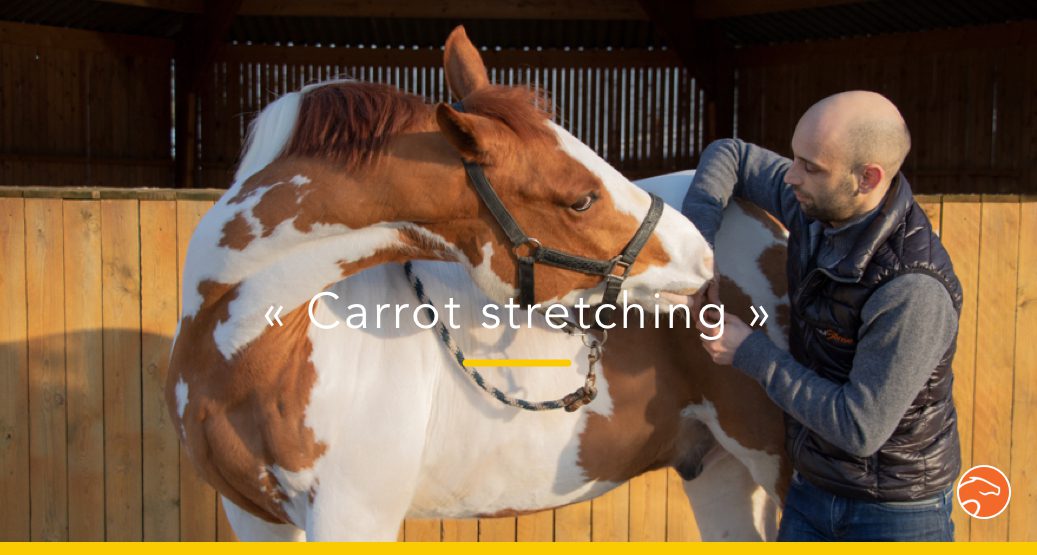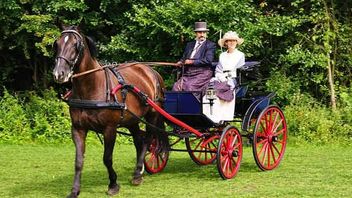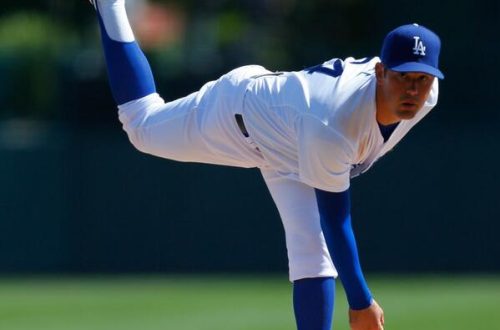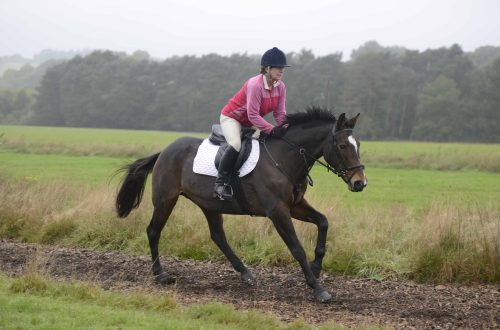
घोडा आराम र सन्तुलन व्यायाम
घोडा आराम र सन्तुलन व्यायाम
At some point, most of us riders begin to dream of a magic “pill” that would instantly solve all the problems that arise during training. But, since it does not exist, we can only hope for a rich arsenal of exercises for working in the arena.
In this article, I want to draw your attention to those that will help you make your horse more relaxed and balanced, get him to connect without undue effort. The schemes below work “magically”, allowing you to achieve a noticeable result even if the rider does not have a perfect seat and the ability to perfectly use the controls.
Many coaches know tricky गोप्य: ask the horse to perform an exercise that will bring his body into the desired shape, and you will quickly get results. If you’ve ever linked several key yoga moves together, you’ve probably experienced the effect yourself. No matter how perfect you are with these movements or how deep your understanding of yoga is, your posture, balance and strength will improve immediately. This is the magic of doing the right exercises at the right time.
Exercises that include frequent adjustments to stride, speed, and posture improve flexibility, fluidity, and lighter forehand.
The following time-honored exercises are worth adding to your toolbox because they are undeniably good for your horse. They will set off a chain reaction of postural changes in the horse’s body. First of all, they create movement in the spine, preventing it from remaining rigid or chronically twisted, as is often the case. Frequent adjustments to stride, speed, and posture will require the horse to engage different muscle fibers at different speeds, eliminating any tendency to block the rider’s input, as well as sluggish and lazy responses to aids. Finally, simple gymnastic patterns encourage the horse to reorganize his body, resulting in energy in the hindquarters and lightening in the forehand, preventing the flat, heavy movement that occurs with frequent repetition.
Because of the interconnectedness of the horse’s muscular and skeletal systems, relatively simple yet strategic maneuvers can have far-reaching effects on its body. I call this kind of work smart, not difficult. Let’s get started.
There are several ways to change the specifics of these exercises while maintaining the general theme. For the sake of clarity, I present them to you in their simplest form.
1. Rhombus in the arena
We put the horse in a good working trot by riding to the right.
From the letter A we go to the letter E, moving along a small diagonal. Don’t drive into the corner between the letters A and K!
On the letter E we leave on the first track and take one step of the trot.
Then we leave the path and drive diagonally to the letter C.
We continue to move along the trajectory of the diamond, touching the arena wall at the letters B and A. If your arena is not marked with letters, put in the appropriate places markers, cones.
सुझाव:
- Use your seat, seat, not your reins as you turn your horse at each point on the diamond. During each turn to a new diagonal, close the inner leg on the side of the horse at the girth (the outer leg lies behind the girth). Use a light sluice to guide the horse’s withers to the new letter or marker.
- Think about controlling the horse’s withers, not his head and neck, guiding him where you need to go.
- To drive clearly between each letter, drive as if there is an obstacle between the letters and you need to drive clearly through the center. Don’t start turning before you touch the letter, otherwise the horse will start to go sideways, falling out with the outside shoulder.
- Maintain equal contact with the horse’s mouth throughout the entire pattern. A common mistake is for the rider to increase the contact in the turns and throw the horse off it when riding in a straight line between the letters.
After you can easily work according to the above scheme, it can be जटिल.
At each of the four points of the diamond (A, E, C, and B), slow down to a short trot as you go through the turn, and then immediately lengthen your trot as you enter the straight between the letters. After you master this exercise as well, try working on the canter pattern.
Cl. घडी
Undoubtedly, the horse’s ability to bend at the sacroiliac joint and lower its croup determines its progress and success as a tournament fighter. Flexion and strength here are important not only for collection and expressiveness of movement, but also for the ability of the horse to carry the weight of the rider on a raised and supple back.
Such flexibility and elasticity is available only to a horse that correctly uses its deep muscles to stabilize its pelvis.
The Clock exercise helps the horse achieve the appropriate tone, combined with relaxation, which is the cornerstone of proper training. It combines elements of steady rhythm, bending, rounding the topline and balance, and can also be performed at the trot and canter. I recommend doing it ten times in each direction.
You will need four poles, ideally wooden, that will not roll over if the horse hits them.
On the trajectory of the 20-meter circle, place the poles on the ground (do not lift them) at 12, 3, 6 and 9 o’clock.
Arrange the poles so that you hit the exact center as you move in a circle.
सुझाव:
- As you ride in circles, remember to look ahead and cross each pole straight down the center. Many riders tend to follow the outer edge of the pole, but this is wrong. You must plan your trajectory in advance to avoid this.
- Count the number of steps between the poles, making sure you take the same number of steps each time.
- Your hands should be calm. Maintain gentle contact with the horse’s mouth when riding over the pole so as not to disturb the horse. She should move freely, without raising her head and neck, without lowering her back.
- Make sure your horse is bending and doesn’t lose the bend all the way through the circle.
This deceptively simple exercise will require you to do a few repetitions before you can tell. that really did it.
यो हुन सक्छ परिवर्तन. You can try going faster or slower, making sure to keep a consistent rhythm at whatever pace you choose. Eventually, you will be able to raise the poles to a height of 15-20 cm. I find this exercise a great tool for building a foundation. I use it with young horses to reinforce the basics before moving on to more advanced gymnastics, and come back to it with older horses to remind them of the basics.
3. Square of poles
Most of the exercises are aimed at achieving their ideal, perfect execution, but sometimes you need to let the horse do the work a little looser. We need to create free, creative movement and make the horse take charge of his own balance rather than relying on the rider and his constant cues from the controls. By asking the horse to move in this way, we help him get rid of the stiffness that limits most riding horses. The horse will then gain agility and better symmetry on both sides of its body.
A square of poles will be especially useful if you want to eliminate old postural stiffness in the horse. Quickly adjusting balance while riding this pattern means your horse will engage muscles at different speeds and intensities. This will not allow her to “float” by inertia, stuck in one rut. This exercise has a shaking effect, encouraging the horse to loosen up in the back, which helps to bend his hind legs better. The horse begins to use his whole body better, and the poles on the ground help him to balance himself more independently, and not rely on the constant help of the rider.
Place four 2,45 m long poles on the ground in a square shape. The ends of the poles touch at each corner.
Start with a walk or trot. Move through the middle of the square, making it the center of an elongated figure-eight (see Figure 3A).
Then move your “figure of eight” so that you make a circle around each corner. Make continuous circles (see fig. 3B).
Finally, move along the “clover leaf” path, passing through the center of the square after each “leaf” (see Figure 3C).
सुझाव:
- Check yourself every time you drive through the square. Make sure you ride through the center of the poles.
- Don’t get hung up on where the horse’s head is. At first, she may not be completely on the lead, and the frame may be unstable at the beginning of work. Do not despair. Remember that the purpose of the exercise is to teach the horse to reorganize itself.
- As in the Diamond in the Arena exercise, think about how to control the horse with your outside leg and about directing his withers, not his head, where you want to go.
- Maintain contact while passing over the poles. Many riders tend to drop the reins and refuse contact with the horse’s mouth. To help the horse maintain a rounded topline, maintain a calm and gentle contact.
चित्र 3B: pole square. Scheme “Continuous circles”. Figure 3C: tosquare of poles. Scheme “Clover leaf”.
Once you get the hang of these patterns, move on and get creative. Think about how you can use the square, what other shapes you can do. Can you add gait transitions as you enter or exit the square or inside it? Can you maintain and control the movement at different speeds at walk, trot and canter as you cross the square? You can also drive the square diagonally from corner to corner. Or you can trot into the square, stop, then make a front turn and exit the square in the same direction you entered it from. Have fun training and use your imagination!
झेक ए बल्लु (मुहान); अनुवाद Valeria Smirnova।





